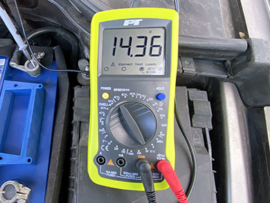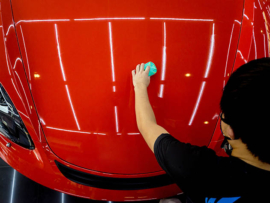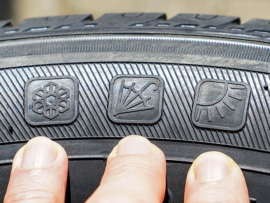The code is related to the ignition system and specifically pinpoints a malfunction within the ignition coil circuit for cylinder 1. The ignition coil’s main function is to convert the battery’s low voltage to the thousands of volts required to create an electric spark in the spark plugs, which ignites the fuel in the combustion chamber. The Engine Control Module (ECM) or Powertrain Control Module (PCM) continuously monitors the performance of the ignition coil circuit. When the PCM detects an issue with the ignition coil’s primary or secondary circuit for cylinder 1, it triggers the P0351 code. This can mean there’s a fault in the coil itself, the wiring leading to or from the coil, or the connectors.
More about the code
Several symptoms can accompany the P0351 code. These may include engine misfires, poor acceleration, a rough idle, decreased fuel economy, and the illumination of the check engine light. As this code is explicitly related to cylinder 1’s ignition coil, diagnosing and fixing it involves examining the coil, its circuitry, and other components linked to that specific cylinder. Ignoring this code can lead to more severe engine problems over time, as continuous misfires can harm the catalytic converter and lead to poor engine performance.
Causes of OBD-II Code P0351
These are the principal technical factors that can lead to the emergence of the P0351 code:
- Faulty Ignition Coil. The ignition coil for cylinder 1 might be malfunctioning or has worn out, preventing it from delivering the necessary voltage to the spark plug.
- Damaged Wiring or Connectors. Wiring leading to the ignition coil for cylinder 1 could be damaged, frayed, or corroded. Similarly, connectors might be loose or compromised, disrupting the electrical flow.
- Faulty PCM or ECM. Less commonly, the Powertrain Control Module (PCM) or Engine Control Module (ECM) might be malfunctioning, giving inaccurate readings or signals.
- Bad Spark Plug. Even though the code primarily points to the coil, a malfunctioning spark plug in cylinder 1 could strain the coil or cause misfires that trigger the code.
- Short or Open in the Coil Circuit. An electrical short or open in the ignition coil’s circuit for cylinder 1 could interfere with its operation.
How much does it cost to fix the code P0351?
As a general advise, for the most common fix which is the ignition coil replacement, you’d be looking at the cost of $130 to $300. The estimate is made for single issue fix without any diagnostic charges. However, if multiple issues are found or if you’re in a region with higher labor rates, the cost could be higher. Here is a general guideline that could help you out with the most common points that people are getting cracked around:
- Ignition Coil Replacement. The cost for a single ignition coil itself can range from $30 to $100, depending on the brand and the vehicle’s make. Labor can range from $100 to $200 per hour. Therefore, replacing a single ignition coil might cost you between $130 and $300.
- Wiring Repair. If the issue is related to damaged wiring or connectors, you might be looking at a cost of $50 to $300, depending on the extent of the damage and labor rates.
- PCM/ECM Replacement. This is on the higher end of the scale. A new PCM/ECM can cost several hundred dollars, with some units surpassing $1000. With labor, the total cost can range from $550 to $1700 or more. However, it’s rare for the PCM/ECM to be the problem when addressing the P0351 code.
- Spark Plug Replacement. If you’re also replacing spark plugs, expect to pay anywhere from $15 to $40 per plug for parts (luxury brands might be more). Labor can add another $100 to $200, making the total range from $115 to $280 for a single plug replacement.
Can I continue driving with the P0351 code?
Driving with this code on isn’t recommended for a number of reasons. Among them: potential damage of the catalytic converter, the engine might stall, misfires, wasted fuel and increased emissions.
How do you test a single ignition coil?
Testing a single ignition coil can help you determine if it’s functioning correctly. Here’s a step-by-step guide:
- Safety First. Before starting, ensure the engine is off, the key is out of the ignition, and the vehicle is in a well-ventilated area. It’s also wise to wear safety glasses and gloves for protection.
- Locate the Ignition Coil. Open the vehicle’s hood and locate the ignition coil. Typically, it’s a small, cylinder-like component connected to the spark plug via a spark plug wire or boot.
- Disconnect the Coil. Carefully disconnect the ignition coil from the spark plug and the electrical connector. Remember the orientation for reconnection later.
- Visual Inspection. Before using any tools, take a moment to inspect the coil for any visible signs of wear, damage, or oil contamination. If it looks suspicious, consider replacing it.
- Multimeter Preparation. Set your digital multimeter to the ohms setting (resistance). This will help measure if the coil is within the manufacturer’s specifications.
Primary Coil Test:
- Identify the primary coil terminals, often two smaller terminals on the top or side.
- Connect the multimeter’s probes to these terminals.
- Note the reading. A typical good coil will read between 0.4 and 2 ohms. However, always refer to your vehicle’s repair manual for exact specifications.
Secondary Coil Test:
- Connect one probe to the center terminal (where the spark plug connects) and the other probe to one of the primary terminals.
- Note the reading. The resistance for this should be higher, often between 6,000 to 10,000 ohms (6kΩ to 10kΩ), but can be up to 15,000 ohms (15kΩ) in some cases. Again, refer to your vehicle’s manual for exact specifications.
- Compare Results. If your measurements are outside of the manufacturer’s specifications, it’s a sign the ignition coil might be faulty and should be replaced.
- Reconnect Everything. Once you’re done, carefully reconnect the ignition coil to the spark plug and its electrical connector.
Additional Test – Ignition Spark Test:
If you have an ignition spark tester, you can perform a spark test. Connect the tester between the coil’s output terminal and the spark plug. Start the engine and observe the tester. A consistent, blue spark indicates a good coil, while an inconsistent or absent spark suggests a malfunction.
Remember, while these steps can provide an indication of an ignition coil’s health, they aren’t definitive. If you’re unsure or if the symptoms persist, it’s always a good idea to seek professional help or advice.
How to replace the ignition coil myself?
This process is straightforward for many cars, but some vehicles may have ignition coils that are more challenging to access, such as those beneath intake manifolds or in other hard-to-reach places. If you’re unsure about any step or if complications arise, it’s best to consult a professional mechanic.
If you decided to do it yourself, consult your vehicle’s repair manual first. Below is a general step-by-step guide on how to replace an ignition coil yourself:
- Safety and Preparations:
– Ensure the vehicle is on a flat, stable surface.
– Turn off the engine and remove the key from the ignition.
– Wait for the engine to cool down completely to avoid burns.
– Wear safety glasses and gloves for protection. - Locate the Defective Ignition Coil:
– Open your vehicle’s hood.
– Identify the ignition coils. They are usually on top of the engine and are either directly connected to the spark plugs or connected via spark plug wires. - Disconnect the Battery:
– For safety, disconnect the negative terminal of the car battery using a wrench. This prevents accidental starts or electrical shorts. - Remove Electrical Connectors:
– Carefully unplug the electrical connector from the ignition coil. This is usually a simple clip or harness. - Unbolt the Ignition Coil:
– Using a socket or wrench, carefully remove the bolt(s) or fasteners holding the ignition coil in place. - Remove the Ignition Coil:
– Pull the ignition coil straight up and out. If it’s connected to a spark plug, be cautious not to pull too hard, as this might damage the plug or the connector. - Install the New Ignition Coil:
– If your new ignition coil came with a new boot (the part that connects to the spark plug), consider replacing it as well.
– Position the new ignition coil over the spark plug or in its mounting position.
– Press it down gently until it seats correctly. - Secure the Ignition Coil:
– Reattach the bolt(s) or fasteners you removed earlier. Ensure you don’t overtighten, as this can damage the coil or its housing. - Reconnect the Electrical Connector:
– Plug the electrical connector or harness back into the ignition coil. - Reconnect the Battery:
– Reattach the negative terminal of the car battery and tighten it with a wrench. - Test the Replacement:
– Start your vehicle to ensure it runs smoothly. If there were misfire symptoms before, they should now be gone. Monitor the dashboard for any warning lights. - Dispose of the Old Ignition Coil Properly:
– Consider recycling or disposing of the old ignition coil at a local auto parts store or disposal facility.
We do an efforts to find, research and recommend the best products. So, we may receive commissions from purchases that you make after following the links in our product reviews.








Leave A Comment